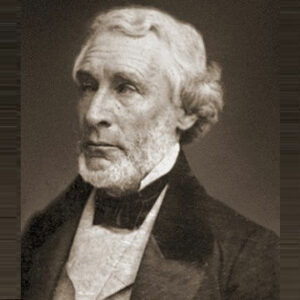The New York Herald was founded and edited by James Gordon Bennett, Sr., who is known as the “Father of Modern Journalism.” Bennett Sr. was born in Scotland and educated in a seminary for the Roman Catholic clergy before emigrating to America in 1819. Bennett subsequently landed in New York City, where he did subordinate work for journals after spending some time in ill health and working low-paying jobs. Over the next ten years, James Gordon Bennett worked for a number of newspapers, including the New York Enquirer’s Washington reporter and the New York Courier and Enquirer’s assistant editorship. After that, he tried twice to start his own newspaper but failed both times. Bennett produced the first issue of a modest one-cent paper called ‘The New York Herald’ in 1835, with a little working capital. Bennett then used his skills and creativity to turn the publication into a big commercial success over time. He recognized the necessity of deadline journalism and focused on gathering a range of news with the use of sensational letters, introducing a variety of modern journalism approaches. Bennett’s paper published the first Wall Street financial story in America in 1835, and he later maintained a staff of 63 war reporters for swift and effective broadcasting throughout the Civil War. Bennett was the editor of the New York Herald virtually until his death, and he molded the American newspaper into what it is today in many ways.
Childhood and Adolescence
James Gordon Bennett, Sr. was born into a Roman Catholic family in Newmill, Banffshire, Scotland, on September 1, 1795, and raised in a predominantly Presbyterian environment.
Bennett went to a Catholic seminary in Aberdeen, Scotland, at the age of 15 after receiving a classical education. He aspired to be a clergyman at first, so he studied for four years at the seminary before emigrating to America in 1819.
The career of James Gordon Bennett, Sr.
Bennett went to North America at the age of 24 and landed in Nova Scotia with very little money in his pocket. He arrived in Boston penniless and lived in squalor for a few days before getting employed as a clerk at a publishing house.
He then worked as a proofreader, where he learned the fundamentals of the publishing industry. He moved to New York in the mid-1820s and began working as a freelancer in the newspaper industry.
Bennett then went on to work as a translator for the powerful Charleston Courier in South Carolina. His employer, Aaron Smith Wellington, taught him key journalism lessons when he was translating stories from French and Spanish publications.
Bennett moved to New York after failing to fit into Charleston’s social order and worked as a lecturer and freelance writer for the next several years. He got a job at the New York Enquirer in 1827 and was named the first Washington correspondent for a New York City newspaper.
Bennett started the New York Herald with working capital of $500 in 1835 after acquiring enough knowledge about journalism and failed twice to launch his own newspaper.
Bennett served as publisher, reporter, advertising, and circulation manager, and the newspaper’s office was in a decrepit basement in its early days. Bennett used his passion and ingenuity to turn the Herald into the world’s most widely circulated newspaper during the next 37 years.
Bennett pioneered a number of long-lasting media innovations, including posting the closing prices of equities traded on the New York Stock Exchange each day, recruiting reporters to cover news ahead of his competitors, and effectively utilizing communication capabilities to fulfill deadlines.
Bennett was the first to use the telegraph widely for news coverage, arranging for small boats to meet steamships crossing the Atlantic for news. He created correspondents in Europe, developed a social column, and insisted on often changing advertisements to increase consumer sales, which benefited newspaper sales.
Bennett used the telegraph once it was invented to quickly receive and print news from several cities. He was also the first newspaper publisher to use rail and riverboat transportation to collect data on a variety of national and international topics.
Bennett’s newspaper’s popularity was further aided by the fact that it was politically apolitical, with no ties to any political party. As a result, he never hesitated to print editorials that targeted a variety of political leaders, and as a result, he received severe beatings from his foes.
The Herald became one of the most successful newspapers in the world, and Bennett was ranked among the wealthiest Americans of his day, thanks to brilliantly crafted news pieces with a creative flair and without any political influence.
Bennett Sr. stayed linked with the newspaper until his death, despite handing over the running of the newspaper to his son, James Gordon Bennett, Jr., in 1867.
Major Projects of James Gordon Bennett, Sr.
The New York Herald had the greatest circulation and earned significant fame in the newspaper world between 1861 and 1865, during the American Civil War. James Gordon Bennett was effective in obtaining stories from the battlefield ahead of the dispatches that were transmitted to the War Department, thanks to technological advantage and new information-gathering procedures.
Bennett devised novel editorial approaches that increased readership, establishing his daily as a must-read for citizens and political leaders alike. He was the first newspaper publisher to acquire a full report of a significant political speech via the telegraph, and he engaged more than 60 correspondents to cover the Civil War battles.
Personal History and Legacy
Bennett married Henrietta Agnes Crean in June 1840, and the couple had three children: James Gordon Bennett, Jr., and Jeanette Gordon Bennett.
On June 1, 1872, in New York, United States of America, James Gordon Bennett, Sr. died in his sleep. He was laid to rest in Brooklyn’s Green-Wood Cemetery.
Estimated Net Worth
The estimated net worth of James Gordon Bennett, Sr. is unknown.


